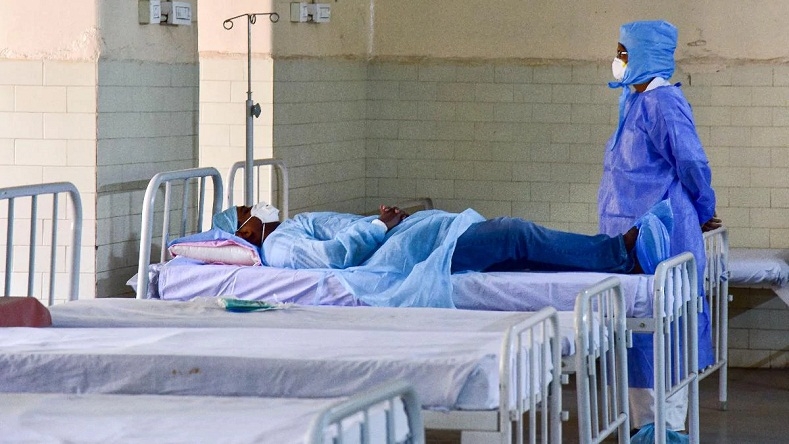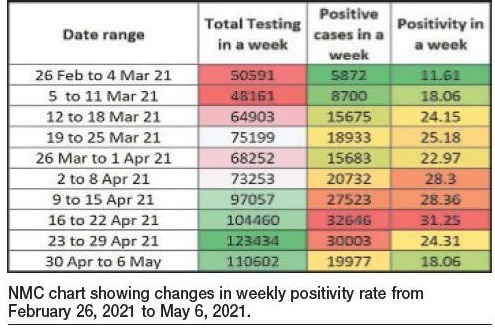City’s weekly positivity rate dips to early-March level
| Date :09-May-2021 |

Staff Reporter :
IT APPEARS that the city of Nagpur is witnessing decline in positivity rate after reaching the ‘peak’ in the prevailing second wave of COVID-19. As far as the data with Nagpur Municipal Corporation (NMC) is concerned, weekly positivity rate has dipped to the early-March level. After the first wave of infections last year, the situation improved a lot towards the end of the year 2020. The positivity rate (number of positive COVID-19 samples as against the number of tests conducted) also had declined. In the week from February 26 to March 4 this year (2021), the positivity rate was 11.61 per cent. As against 50,591 samples tested, 5,872 tested positive for COVID-19 during that week. The weekly positivity rate for March 5 to March 11 was 18.06 per cent.

Over the next weeks, the positivity rate kept on increasing in city. The ‘second wave’ reached its ‘peak’ in April. Between April 16 and April 22, the positivity rate for the city was as high as 31.25 per cent. As against total 1,04,460 tests conducted during this period, as many as 32,646 samples tested positive for COVID-19. However, as NMC data reveals, after April 22, the weekly positivity rate began to decline. The trend continued for the next two weeks. The positivity rate for the period between April 30 and May 6 was 18.06 per cent. It was exactly the same as it was for the period between March 5 and March 11. It is a soothing news. For, it means that despite increasing testing, the number of samples testing positive has come down steadily. Interestingly, on Saturday, the positivity rate for the city was 13.66 per cent. Of a total 14,756 samples tested on Saturday, 2,016 samples tested positive for COVID-19. Ram Joshi, Additional Municipal Commissioner, told ‘The Hitavada’ that the trend was likely to continue in days to come. According to him, the decline in positivity rate was because of several reasons.
The lockdown-like restrictions, regulated timings for grocery and vegetables etc, ban on large gatherings/meetings/marriage ceremonies, etc. and co-operation of people had helped the administration in tiding over the crisis. Initially, when the number of patients saw tremendous increase, there was burden on existing healthcare infrastructure. “Gradually, setting up of COVID Care Centres and step-down facilities in hotels for mild or asymptomatic patients led to availability of hospital beds for the needy patients. Improvement in treatment protocols, efforts to set up oxygen generation plants in hospitals, response to shortage of medicines etc... all these have had a positive impact and the positivity rate is registering steady decline,” Joshi said.
Asked about the likelihood of third wave and the warning about its impact on children, Joshi said that the civic administration was already preparing for it. “As per the global experience, the likely third wave may come after around six months. Still, considering the advisories, we are creating children’s ward in every hospital of NMC keeping in mind the likelihood of children getting affected. We will have to rope in paediatricians and create some facilities, which we are doing,” he added.